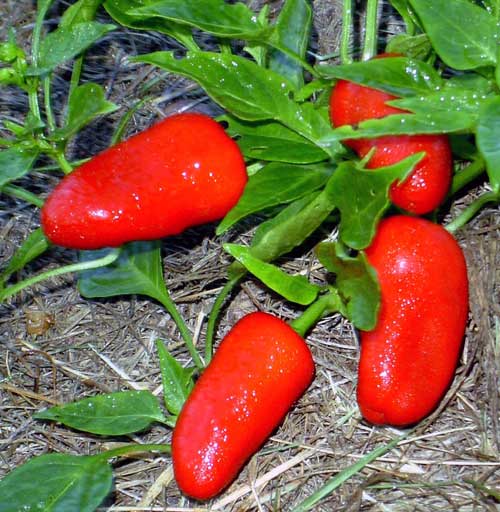The chile pepper is used more and more today as people start to develop
a taste for spicy and exotic foods. It can be found in recipes
ranging from ice cream to omelets and has spread rapidly into the gardens of North America.
The chile belongs to the genus
Capsicum and the diverse Solanaceae or nightshade family which also includes the tomato, potato, and eggplant (Bosland, 2000).
When people think of chiles, they think of the small hot chiles like the cayenne, tabasco, or jalapeno.
However, chiles belong to a diverse genus which also includes species like the mild bell pepper, paprika, and pimento.
Chiles were originally found only in the Americas, but it was not long before Columbus arrived in search
of the spices of the East Indies. Columbus did not find the East Indes,
but he did find the chile. Columbus called the chile a red pepper, assuming that it
was of the same type of pepper from which black pepper is made. Chiles are not related to peppers;
but this is how they got stuck with the pepper name.
Chiles spread rapidly through Europe and by the late 1500's were grown in Italy, Germany, and, France.
It was not long before chiles found their way to Asia and Africa on established trade routes.
This region was already accustomed to exotic spices such as ginger and clove, and it was therfore only a matter of time
before chiles became a staple of the regional diet. China, India, and Pakistan are today the worlds largest producers
of chiles; even though the chile did not exist there 500 years ago. Chiles are so synomous with foods of this region
that a French taxonomist once mistook the origin of one species of chile and named it Capsicum Chinese (Bosland, 2000).
Contact Me
How Hot Are They?>>


